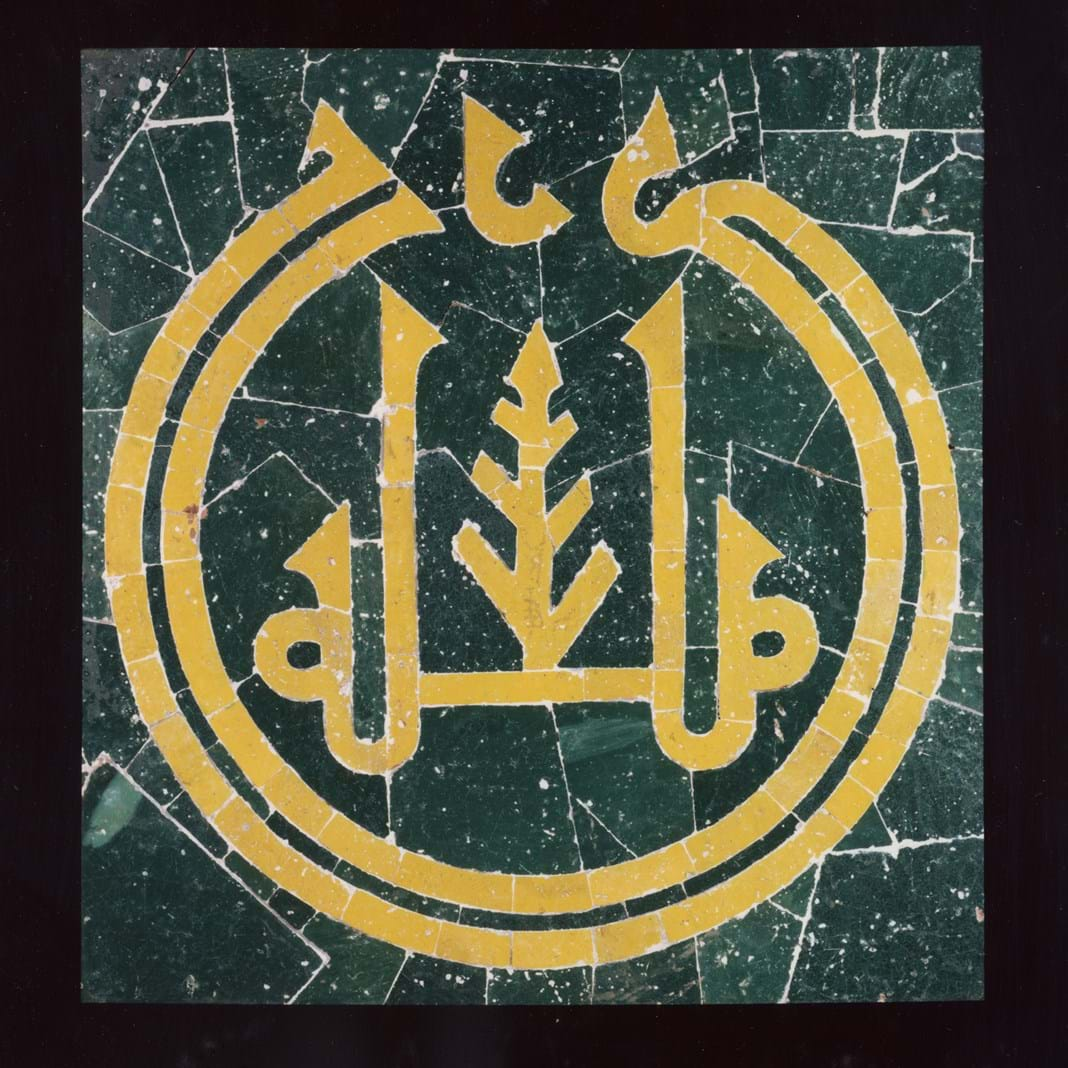Opus sectile panel with a Kufic inscription reading ‘God is my Master’
To this day, the origin and date of this dramatic ceramic panel in two strongly-contrasting colours remain a mystery. With bold yellow letters against a green ground, It is composed of ceramic tile elements with a red earthenware body covered with an opaque monochrome glaze. These have been cut and juxtaposed to form the pattern. Known as opus sectile, the technique harks back to Roman times. In the Islamic world it is usually associated with tile revetments of the Timurid period. There, however the body material is white, the colour palette is broader, the glazes more translucent and the aesthetic notably different.
In the absence of any recorded monuments with related mosaics, opinions as to the origin of this sui generis panel range from Morocco all the way to northern India, and from the 10th to the 18th century. In the hand-written 19th-century inventory of the Ispenian collection in Cairo, it was recorded as having been acquired from Mosul. Although a priori unlikely, this claim gains some credence by the arrangement of the kufic letters to form a circular medallion, a formula we find on Abbasid coinage and on an early Islamic fresco fragment in the Damascus Museum.
Origin
Central Islamic Lands
Date
18th century or possibly much earlier
Height: 57 cm
Width: 55 cm
Provenance
Ispenian Collection, Cairo, before 1900
Georges Antaki Collection, 1960s
Acquired by AXIA in 1990
Exhibited / Published
UNESCO greeting card in 1990-91
'Reflections of China in an Islamic Mirror' at AXIA for Asian Art in London, 19/11 to 4/12/98, no. 10
